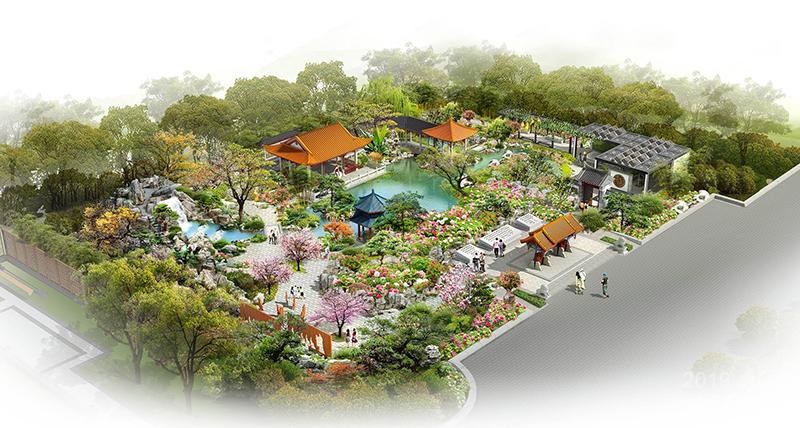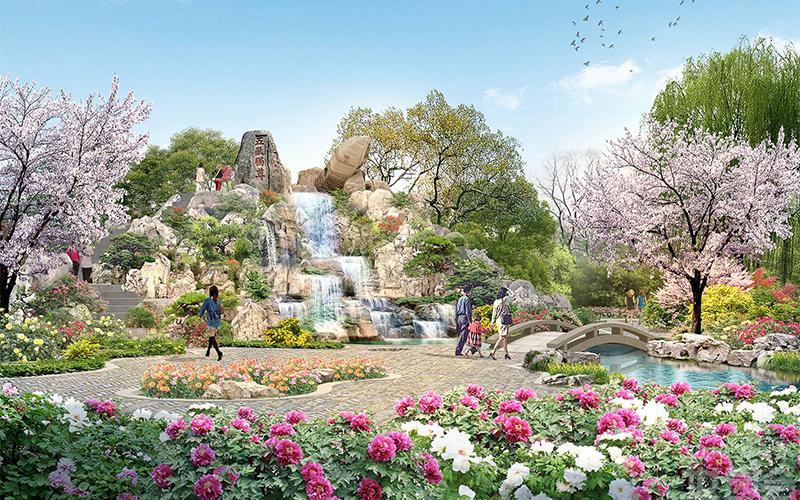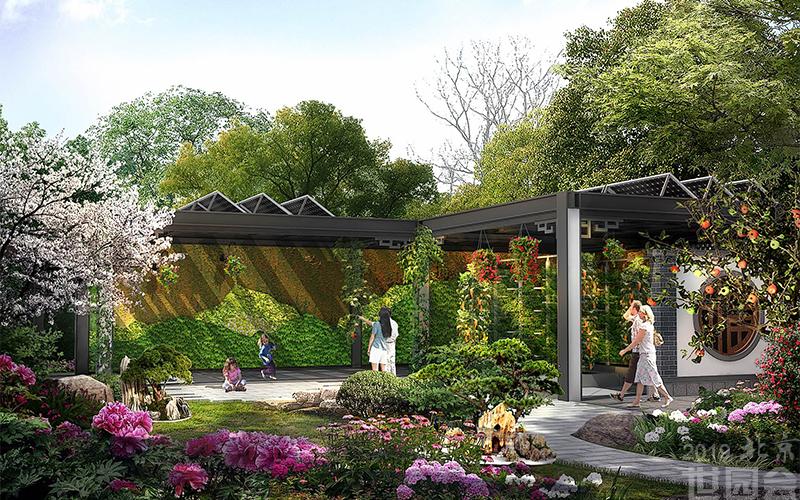With splendid landscapes, the Qilu region (now Shandong) enjoys a beautiful scenery. Shandong is not only the birthplace of the Qilu culture but also the source of Confucianism. The most majestic one of China's five famous mountains thathasbeen towering for thousands of years—Taishan Mountain—is located in Shandong. Taishan Mountain is not only a scenic wonder but also the treasure of the Qilu land. In Beijing Expo 2019, the Shandong Garden will show the charms of Qilu to the world through five scenic areas: Qilu Greets Visitors, Custom of Xingtan, Primacy among Five Famous Mountains, Scenic Qilu,andWell-Off Families.


Stepping into the Shandong Garden, you will see the first area—Qilu Greets Visitors. With the Chongguang Gate of the Confucius Mansion as the prototype, it is entitled “Qilu Garden” as Confucianism is a spiritual garden where the Chinese nation bloomed and a metaphor for Confucius’ concept of “the first family on earth.” Along with the rocks, “the king of flowers”— Heze peonies—are planted everywhere so that you can admire their beauty. Meanwhile, seasonal flowers will be changed regularly for the garden to remain beautiful.

Passing through the Crape Myrtle Gate, you will enter theCustom of Xingtan.The platformof Six Arts and Cultural Wall of Six Arts are set here, reproducing the historical scene of Confucius giving lectures. “The passage of time is just like the flow of water which goes on day and night” engraved on the stone reproduces Confucius’ regret, and brings back people’s resonance for cherishing the time. In Primacy among Five Famous Mountains, rocks are piled up into mountains, forming the landscape of lofty mountains and flowing water. You can appreciate the majesty and grandeur of Taishan Mountain by admiring landscapes of Shigandang, Eighteen Bends, “Confucius Was Here,” etc.

Scenic Qilu is thecore exhibition area of the Garden. Designers have created a natural, ecological space with waterscapes, main landscape buildings and horticultural plants, showing the Qilu culture in a comprehensive way. InScenic Qilu, three islets on the water symbolize three celestial mountains of Penglai, Fangzhang and Yingzhou, and they embody the design philosophy to learn fromnature. On the central axis, there is the landmark that leads the whole Garden—QiluVeranda. Applying new materials as building components, designers have combined modern and traditional elements to bring back the authentic Qilu culture which is open, inclusive, integrated and blooming. Outside the building, there is a Yuanxiang Platform which, in Mandarin, means “prolonging fragrance.” The Lü Opera shows are performed here for the visitors to enjoy. Meanwhile, the adjacent Long Corridor of Qilu Style will show the “ten sceneries of Shandong” through the cut-out windows and paper cutting.

In Well-Off Families, there will be exhibitions with the themes of new technologies for thehorticulturalplanting in Shouguang Vegetable Garden, Shandong-style fruit tree gardening and important arts for the people's welfare. Shouguang Vegetable Garden will show Shandong’s technical achievements in fruit and vegetable gardening in a comprehensive way with all kinds of planting techniques like soilless cultivation and drip irrigation as well as the Exhibition Corridor for Fruit and Vegetable Gardening.
